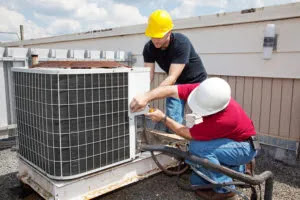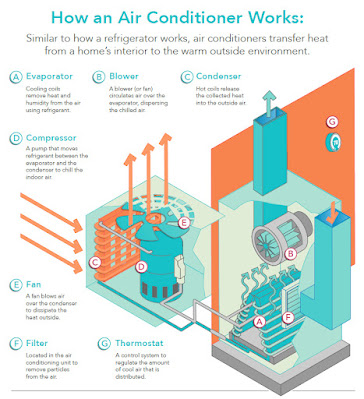INSTALLATION OF AIR CONDITIONERS.
These are the steps required for the installation of air conditioners.
It is important to note that air conditioner installation can vary depending on the specific model, brand, and installation requirements. It is advisable to follow the manufacturer's instructions or consult a professional HVAC technician for a proper and safe installation.
Window air conditioners are one of the easiest to install. They are a simple and affordable way to cool down a room. They are reliable, durable, and can cool virtually any room size. The models today are more energy efficient than those built about a decade ago. To install a window air conditioner, it is recommended to consider the following tips:
Assess the area
Evaluate the space where the air conditioner will be installed. Consider factors such as room size, insulation, and windows to determine the appropriate size and capacity of the air conditioner unit.
Select the unit
Choose an air conditioner unit that suits the cooling needs of the area. Consider factors such as energy efficiency, cooling capacity, noise levels, and any specific features required.
Prepare the installation location
Clear the area where the air conditioner will be installed, ensuring there is sufficient space for the unit. Remove any obstacles (furniture, decorations, etc.) that may obstruct the installation process.
Mounting the unit
Depending on the type of air conditioner, install the indoor unit on the wall or ceiling using a mounting bracket or appropriate hardware. Ensure it is securely mounted and leveled.
Connect the refrigerant lines
For split air conditioners, connect the refrigerant lines from the indoor unit to the outdoor condenser unit. Ensure proper insulation and sealing to prevent refrigerant leaks.
Install the outdoor unit
Place the outdoor condenser unit on a stable and level surface, such as a concrete pad. Ensure proper clearance around the unit for airflow and maintenance access.
Electrical connections
Connect the electrical wiring from the indoor unit and outdoor unit to the power supply. This should be done by a licensed electrician to ensure safety and compliance with electrical codes.
Test the system
Once the installation is complete, perform a thorough check of the air conditioner system. Test the cooling operation, airflow, thermostat settings, and any additional features to ensure proper functioning.
Insulate and seal
Properly insulate and seal any gaps or openings in the installation to prevent air leakage and enhance energy efficiency.
User instruction
Provide the user with detailed instructions on operating and maintaining the air conditioner, including cleaning filters, scheduling maintenance, and troubleshooting common issues.
Installation specification of the different types of air conditioners.
Split air conditioner
Split air conditioners require professional installation. The indoor unit is typically mounted on a wall or ceiling, while the outdoor unit is placed outside the building on a flat surface or mounted on a wall. Refrigerant lines connect the two units, and electrical wiring is connected to a power source.
Window air conditioner
Window air conditioners are designed to be installed in a window or a custom opening in a wall. They typically consist of a cooling unit that sits partially outside the window or wall, while the front portion of the unit remains inside the room.
Central air conditioner
Installation of central air conditioners involves a combination of assessing cooling needs, implementing ductwork, connecting outdoor and indoor units, electrical wiring, refrigerant lines, and thermostat installation. Professional installation ensures that the system operates optimally and provides efficient cooling for the space.
Portable air conditioners
Portable air conditioners require proper venting to function effectively. They come with an exhaust hose that needs to be connected to a window kit or venting system. The hose expels hot air outside, while the unit draws in fresh air from the room. Most portable air conditioners also come with adjustable window kits to fit different window sizes.
Ductless mini split air conditioners
Ductless mini-split systems are relatively easy to install compared to central air conditioning systems. They consist of thin copper tubing and electrical wiring that connect the outdoor unit to the indoor unit(s) through a small hole in the wall or ceiling. This flexibility allows for easy installation in various residential and commercial settings without the need for extensive ductwork.
Ceiling cassette air conditioners
Ceiling cassette air conditioners are typically recessed into the ceiling. They require a drop ceiling or a space above the ceiling for installation, as the unit is partially embedded in the ceiling. Installation may involve cutting a hole in the ceiling and connecting the unit to the outdoor condenser via refrigerant lines and electrical wiring.
Packaged terminal air conditioners
Packaged terminal air conditioners units are designed for through-the-wall installation. They fit into a sleeve, which is mounted on an exterior wall, providing a secure and sealed connection to the outside. The units are usually installed just above ground level to allow for proper airflow.
Conclusion
Installation ensures that the system operates optimally and provides efficient cooling for the space.




Comments
Post a Comment